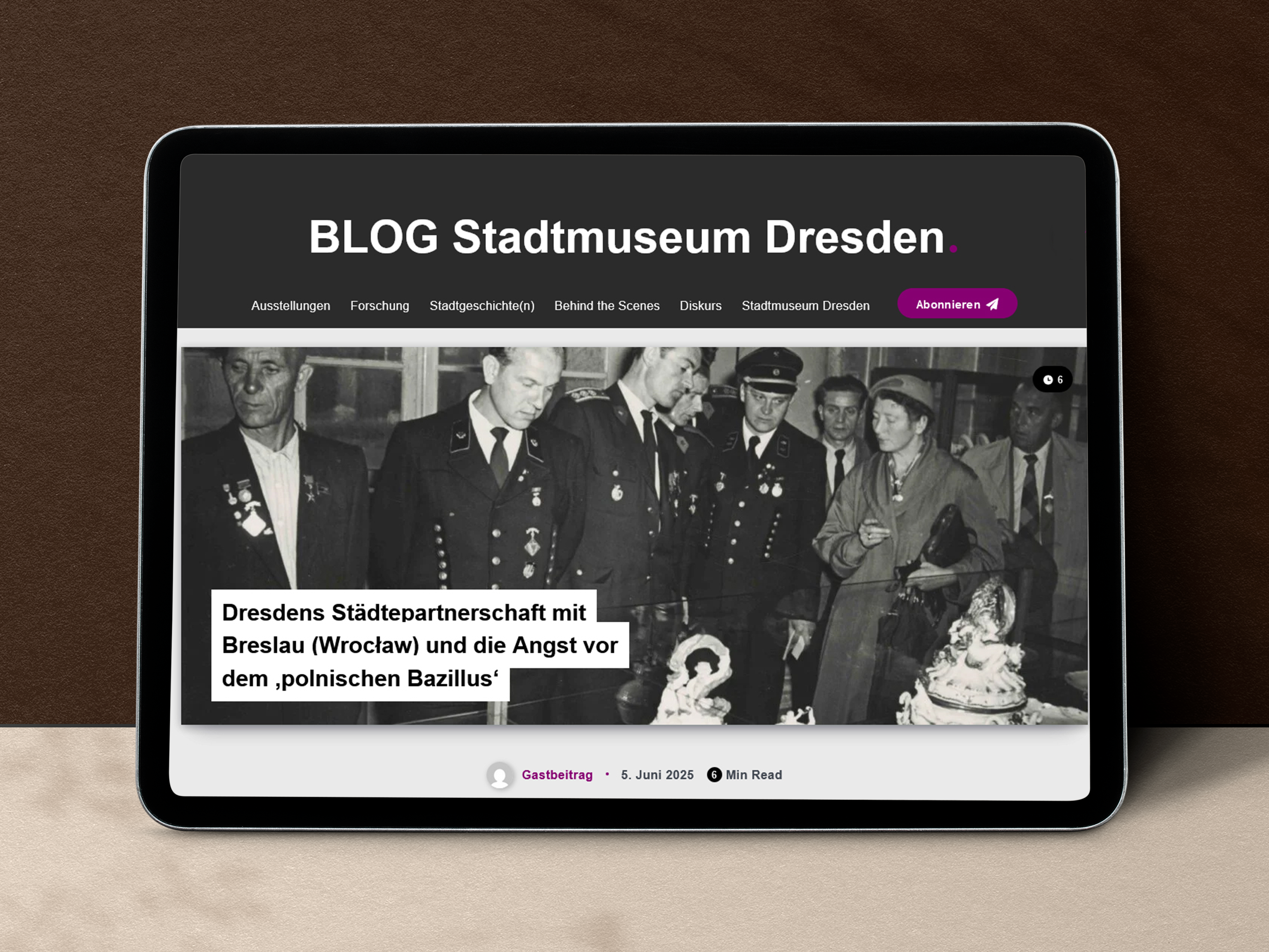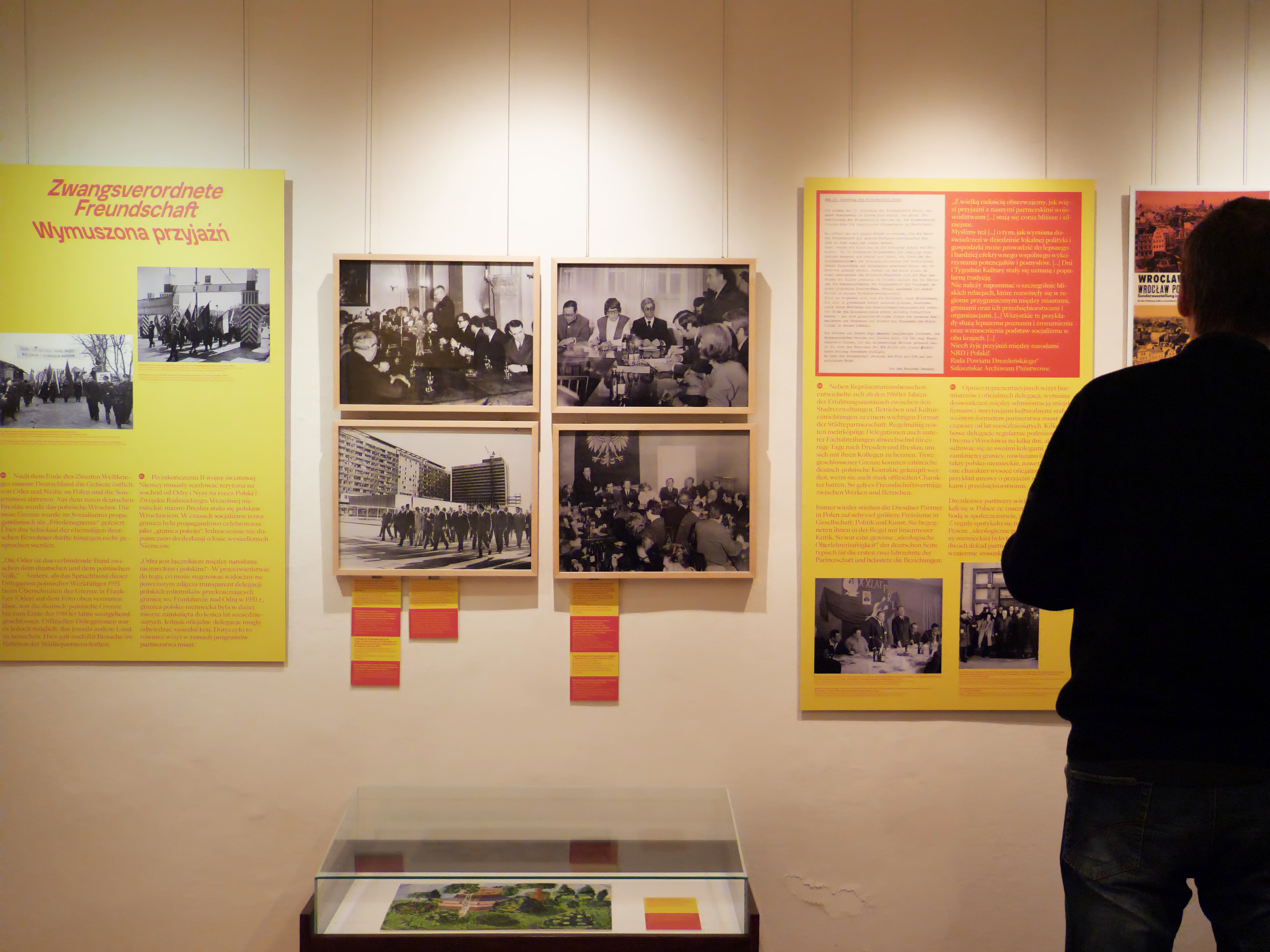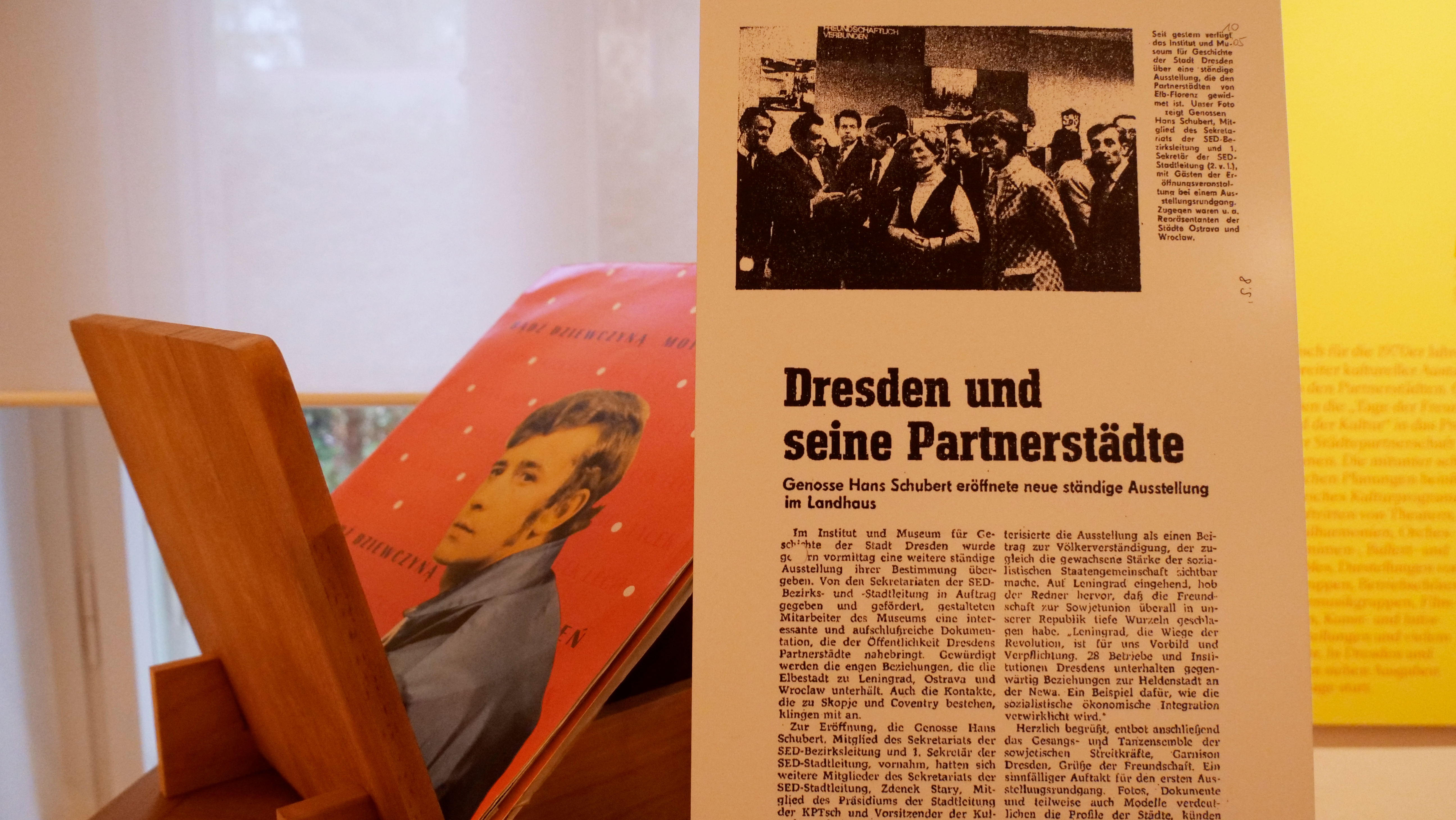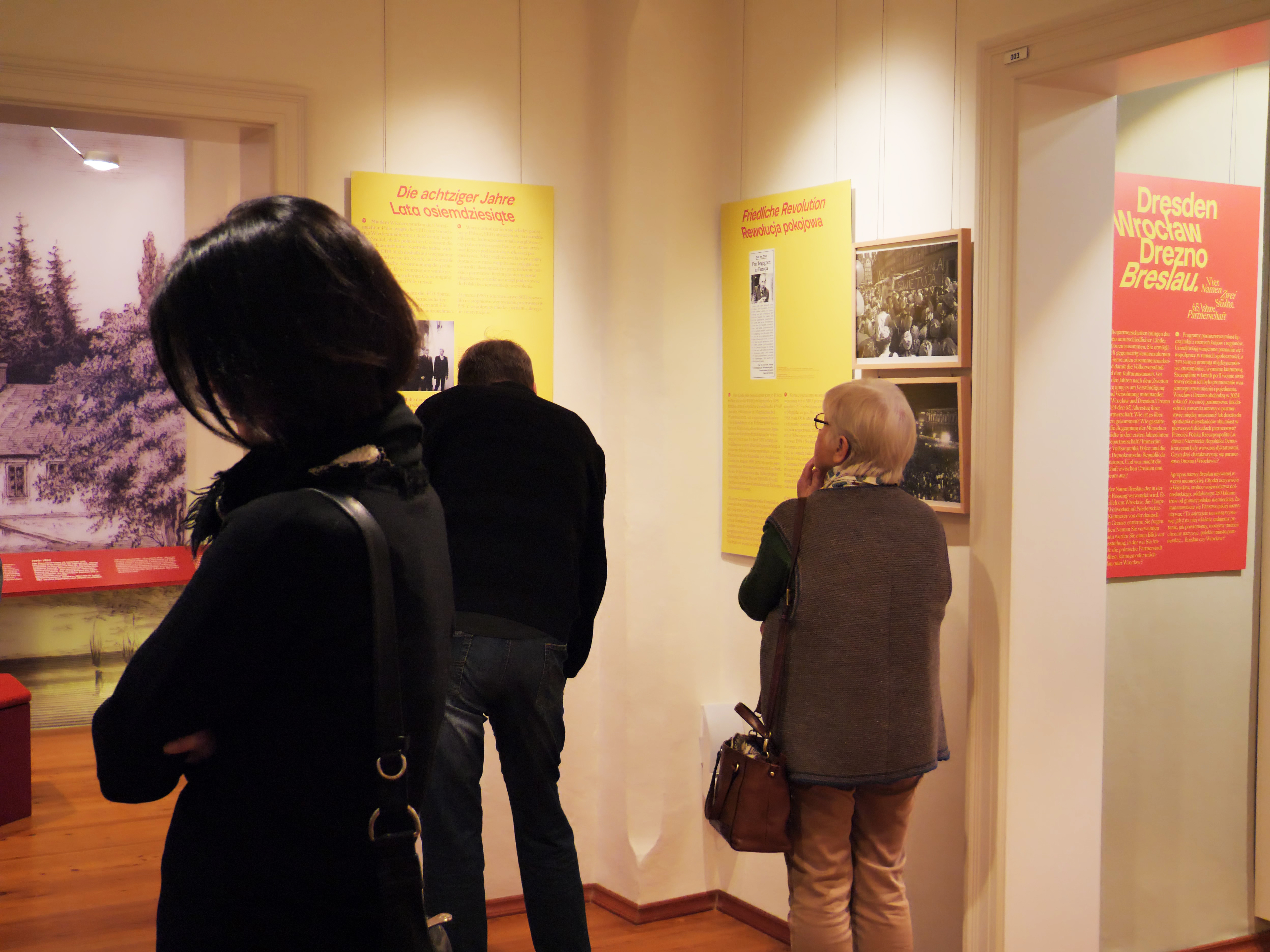Town twinning programmes bring people from different countries and regions together. They enable people to get to know each other and work together as communities - and thus promote international understanding and cultural exchange. Particularly in the years following the Second World War, the aim was to promote understanding between and reconciliation with one another.
The exhibition provides a vivid account of the long-standing city partnership between Dresden and Wrocław. While partnerships between cities across borders have been known as bilateral institutions connecting countries and people since the 1990s, hardly anyone is aware of their origins in the cultural policy of the former GDR.

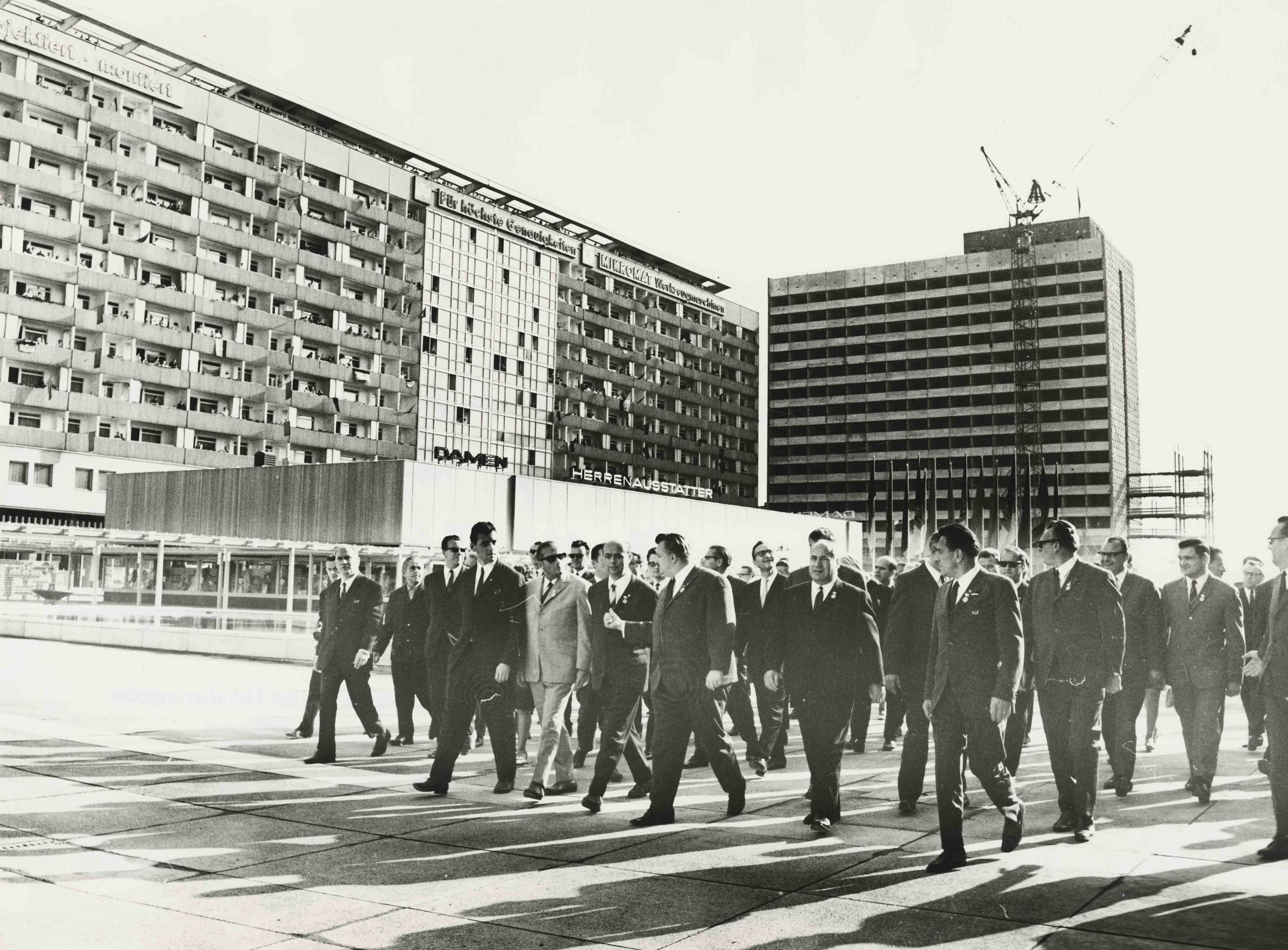
Forced friendship?
Why were city partnerships established - why the one between Dresden and Wrocław in 1959? What function were they supposed to fulfil? How were the partnerships before 1989 able to facilitate personal encounters and contacts despite their strong political instrumentalisation? And how was it possible to continue the partnership after 1989?
The article tells the story of the resumption of relations and the many, very different activities - in the spirit of reconciliation, civic engagement, cultural cooperation and encounters between people.

